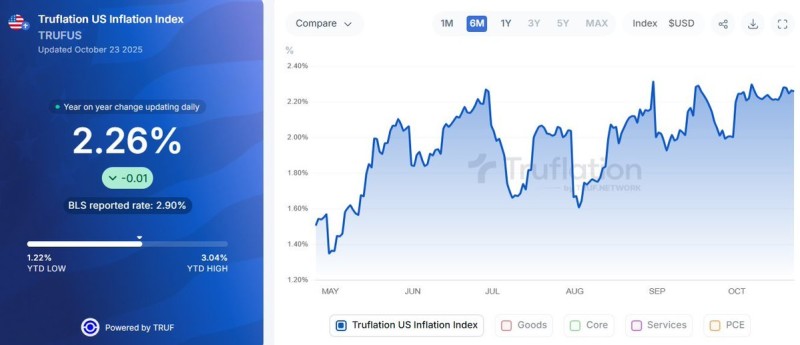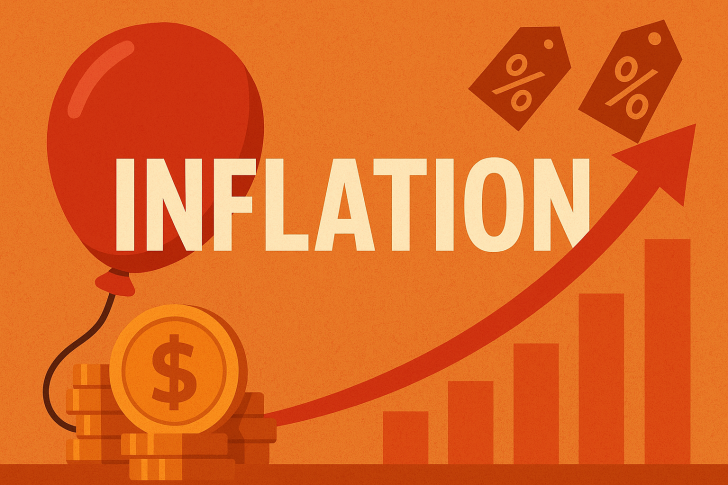After months of declining prices, inflation is creeping back up. Truflation's daily-updated index shows the annual rate has reached 2.26% as of October 23, 2025—a six-month high. This contrasts with the Bureau of Labor Statistics figure of 2.9%, but both tell the same story: prices are rising again, just at different speeds.
The question is whether this is a temporary blip or the start of something more persistent.
What the Numbers Show
Truflation's blockchain-based tracking recorded 2.26% inflation, down just 0.01% from the previous day but significantly higher than earlier this year. The data shows inflation bottomed around 1.22% before climbing steadily back toward current levels. While still below the official government rate, the gap has been narrowing—suggesting both metrics are catching the same upward momentum.
As shared by STEPH IS CRYPTO, looking at the six-month trend, inflation has moved from roughly 1.4% in May to over 2.2% in October. There were brief pullbacks in July and August, but they didn't reverse the broader climb. The pattern is clear: inflation isn't spiking dramatically, but it's stopped falling too.

Energy markets remain unpredictable. Oil price swings earlier this year rippled through transportation and logistics, keeping goods expensive even as crude stabilized. Meanwhile, a strong job market means people are still spending, which limits how much the Fed's rate hikes can cool demand. Service sector inflation—especially housing and healthcare—continues to be stubborn. Rent has eased slightly but remains well above pre-pandemic norms. And the Fed's "higher for longer" rate policy takes time to fully work through the economy, meaning inflation could linger around these levels for a while.
How Markets Are Responding
So far, investors aren't panicking. The 2.26% reading is notable but not alarming—a reminder that inflation isn't beaten yet. Stock markets have stayed relatively calm, with some money rotating into defensive sectors like consumer staples and utilities. Bond yields ticked up as traders scaled back expectations for rate cuts in 2026. Gold prices rose modestly as investors sought inflation protection.
The prevailing view seems to be that the Fed can manage this without tipping the economy into recession—the so-called soft landing scenario.
The next Consumer Price Index report in November will be crucial for confirming whether this trend continues or flattens out. Energy markets bear watching too—any renewed oil price surge heading into winter could reignite inflation quickly. And any shift in Fed rhetoric, particularly around potential rate cuts, could change market sentiment overnight.
At 2.26%, inflation is neither a crisis nor a victory. Prices are rising moderately, and while the trend isn't alarming, it suggests the final push to the Fed's 2% target may take longer than hoped. The current phase calls for patience—inflation is cooling slowly, not collapsing. Both investors and policymakers will need to watch the data closely as the economy navigates this delicate period.
 Saad Ullah
Saad Ullah

 Saad Ullah
Saad Ullah

